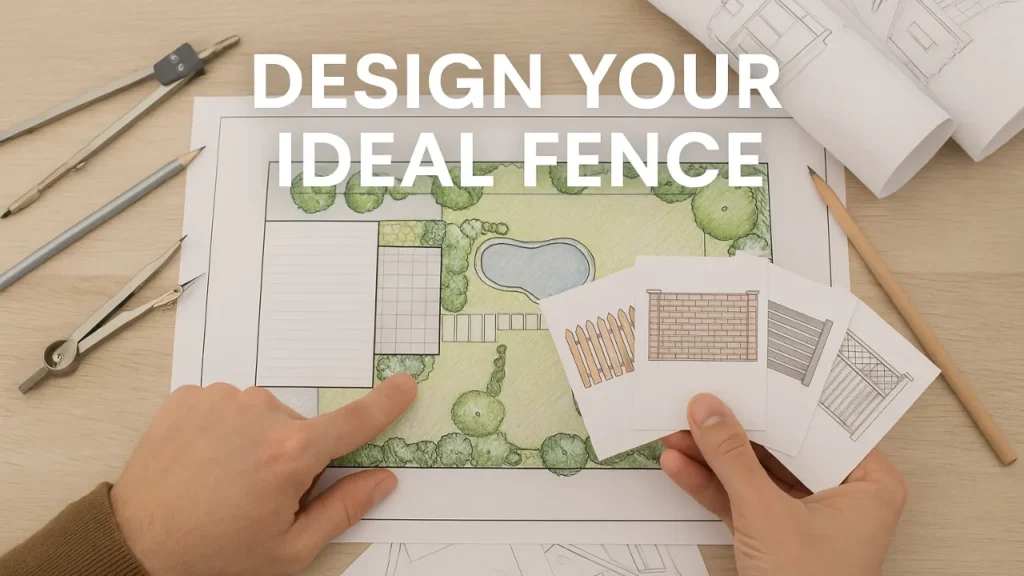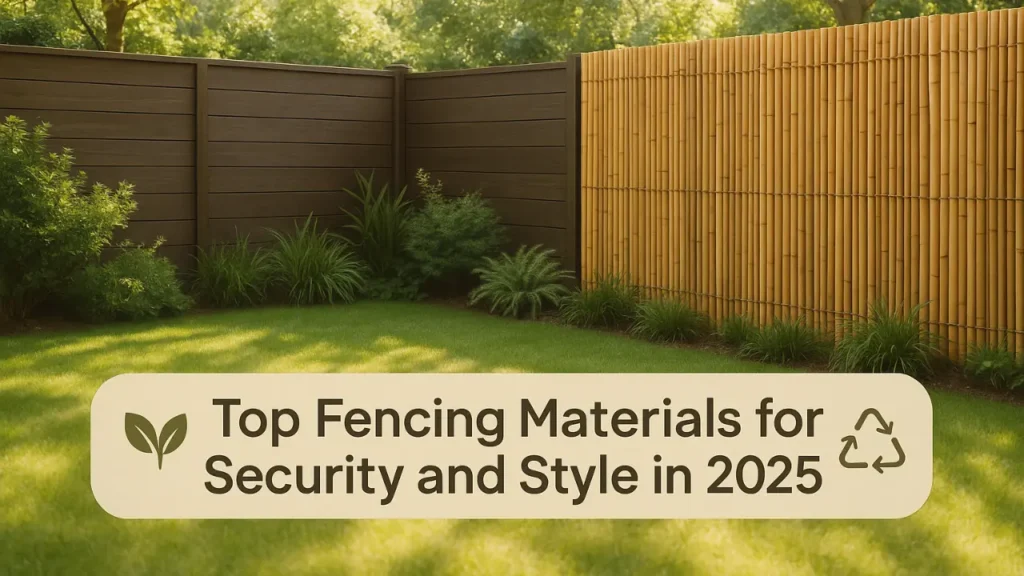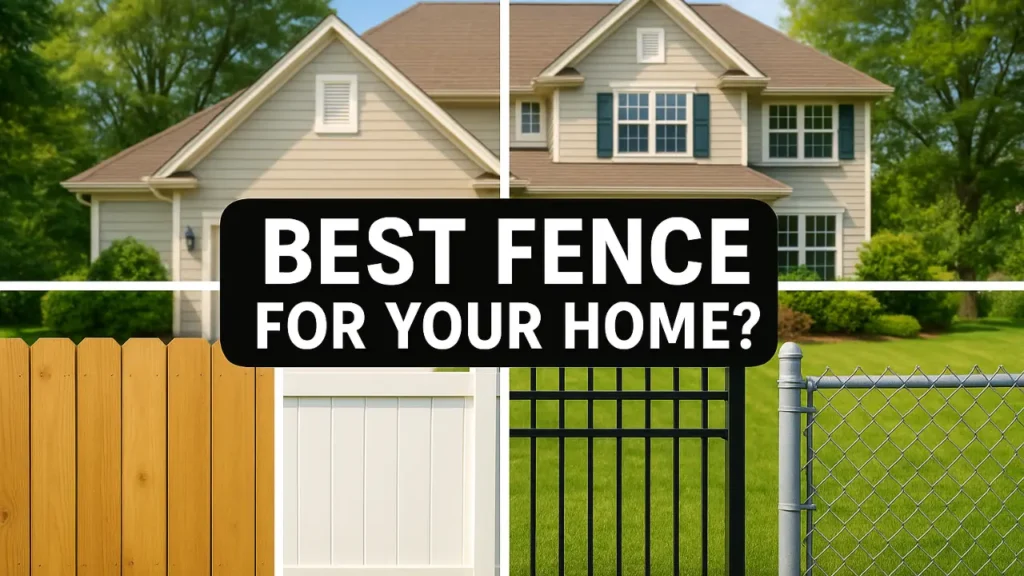How to Choose the Perfect Fence for Your Landscape

A well-designed all season fence can completely transform your landscape. Whether you’re aiming for privacy, curb appeal, safety, or all three, the right fence should complement your outdoor space rather than clash with it. Choosing the perfect fence for your landscape involves careful planning, smart material selection, and design alignment with your home and garden aesthetics.
In this comprehensive guide, we walk you through how to choose the perfect fence that not only enhances your landscape but also adds value, function, and personality to your property.
1. Understand the Purpose of Your Fence
Before considering materials or styles, define the core reason you’re installing a fence. Different purposes require different fence types.
Common Fence Goals:
- Privacy – Block views from neighbors or streets.
- Security – Keep intruders out and kids or pets in.
- Decoration – Add visual appeal and structure to gardens or yards.
- Noise Reduction – Reduce ambient sound in busy neighborhoods.
- Boundary Definition – Clearly mark property lines or divide areas.
Once your goals are clear, you can select a fencing solution that aligns with functionality and form.
2. Analyze Your Landscape and Terrain
The topography of your land plays a significant role in determining the style, structure, and installation process.
Landscape Considerations:
- Flat land is ideal for traditional panel fencing.
- Sloped or uneven terrain may require stepped or contoured fencing.
- Proximity to gardens, trees, or water features may influence the material or layout.
- For small yards, minimalist or see-through fences can avoid visual crowding.
Take note of drainage patterns, soil condition, and plant life, as these can affect both durability and design.
3. Choose a Fence Style That Complements Your Outdoor Design
Your fence should act as an extension of your landscape design, not a distraction from it. Think about your yard’s theme, colors, and architectural features.
Fencing Style Suggestions:
- Modern Landscapes: Sleek horizontal slats in wood or composite, black metal frames
- Traditional Gardens: White picket fencing, arched lattice tops, natural wood panels
- Rustic Yards: Split rail, log fences, or stained cedar
- Tropical or Zen Spaces: Bamboo fencing or vertical garden walls
- Urban Chic Areas: Glass panels, aluminum fencing, or metal privacy screens
The right fence will elevate your landscape design by providing structure without overpowering the natural beauty.
4. Select the Best Fence Material for Your Needs
Fence materials vary widely in durability, maintenance, aesthetics, and cost. Choose one based on your landscape’s conditions, personal taste, and lifestyle.
Popular Fencing Materials:
- Wood: Natural and customizable, great for privacy and aesthetics. Needs regular maintenance.
- Vinyl: Low-maintenance, durable, clean finish. Limited in customization.
- Composite: Eco-friendly, wood-look durability without decay. Higher upfront cost.
- Aluminum: Lightweight, rust-proof, stylish. Offers minimal privacy.
- Wrought Iron: Elegant and strong, excellent for formality. Requires rust prevention.
- Bamboo: Sustainable and exotic, perfect for tropical-themed gardens.
- Glass: Premium and modern. Preserves views but offers little privacy.
Match the material to your climate, maintenance preferences, and visual goals.
5. Factor in Privacy and Openness
Think about how open or enclosed you want your landscape to feel.
High Privacy Options:
- Solid wood or vinyl panels
- Stone or concrete fencing
- Living fences with hedges or climbers
Low Privacy / Open View Options:
- Picket fencing
- Wrought iron or aluminum
- Glass or cable fencing
Blending hard fencing with soft landscaping (like shrubs or trellises) can create privacy without making your yard feel boxed in.
6. Incorporate Landscaping Elements into the Fence Design
Your fence should work with your plants and pathways, not against them. Think of it as a canvas for your landscaping ideas.
Design Ideas:
- Add climbing plants like ivy or jasmine to soften rigid panels.
- Install planter boxes or trellises along the fence.
- Integrate stepping paths or gravel borders for a polished look.
- Use fencing to divide zones—separate vegetable patches, lounging areas, or pet zones.
Well-planned fencing helps define the flow and structure of your outdoor space.
7. Consider Fence Height and Local Regulations
Fence height affects privacy, airflow, and legality.
Typical Fence Heights:
- Front Yard: 3–4 feet
- Backyard Privacy Fence: 6–8 feet
- Pool Fence (by law): Minimum 4 feet with self-closing gates
Always check your local building codes, zoning regulations, and homeowner association guidelines before installation to avoid fines or legal issues.
8. Balance Functionality with Aesthetics
The best fences are those that serve a purpose while also enhancing the overall look of your landscape.
Tips for Balance:
- Use a color palette that matches your home or garden.
- Select materials that blend naturally with your surroundings.
- Keep the design consistent with your landscape theme and house style.
- Don’t go overly ornate or overly plain—proportional design matters.
Think long-term and choose a fence that will look good year-round and age gracefully.
9. Budgeting: Upfront vs. Long-Term Costs
Be realistic about your fencing budget and factor in material, installation, and upkeep.
Cost Guidelines (2025 Estimates):
| Material | Cost per Linear Foot | Maintenance Level |
| Wood | $15 – $35 | High |
| Vinyl | $20 – $40 | Low |
| Composite | $30 – $60 | Very Low |
| Aluminum | $25 – $50 | Very Low |
| Bamboo | $10 – $25 | Medium |
| Glass | $100+ | Very Low |
Investing in a slightly more expensive but low-maintenance fence may save you more over the years.
10. Work with a Professional or Go DIY?
While DIY can save money, professional installation offers precision, durability, and code compliance.
Choose DIY If:
- You’re handy and have the tools
- The fence design is simple
- The ground is level and accessible
Choose Professional Help If:
- Your terrain is challenging
- You need custom gates or automation
- You want to avoid long-term structural issues
A professional can also help optimize the design for landscaping flow, ensuring a seamless finish.
Conclusion
Choosing the perfect fence for your landscape requires intentional planning, a clear vision, and attention to detail. By working with trusted chain link fencing suppliers and aligning your fencing goals with your landscape’s unique needs and your personal style, you can create a functional, beautiful, and lasting boundary that elevates your entire property.
Whether you want to make a bold design statement or carve out a quiet garden retreat, the right fence is the final touch that brings your outdoor vision to life.
FAQs
1. How do I choose a fence that doesn’t make my yard feel smaller?
If your yard is on the smaller side, go for semi-private or open designs like picket, aluminum, or horizontal slat fences. Lighter colors and see-through styles keep sightlines open so the fence frames your landscape instead of boxing it in.
2. What type of fence works best with a sloped or uneven landscape?
On sloped ground, “rackable” or stepped fences work best. Rackable panels follow the natural grade without big gaps, while stepped designs create a stair-step look. Your terrain will often decide whether wood, vinyl, or aluminum is the most practical choice.
3. How can I blend my fence with existing plants and garden beds?
Plan your fence and landscaping together. You can leave space for hedges, add trellises for climbing plants, or use the fence as a backdrop for flower beds. Choosing colors and materials that echo your home’s trim, decking, or hardscape helps everything feel intentional.
4. What should I consider if I want both privacy and a nice view?
Instead of a fully solid fence, mix solid sections with more open designs or layer in landscaping. For example, solid panels around seating areas plus more open fencing facing a wooded view. You can also use taller shrubs or trees to soften solid fences and keep the yard from feeling closed off.
5. How important is fence color in overall landscape design?
Color can completely change how your yard feels. Dark tones (like black or deep brown) make plants pop and help the fence “disappear” into the background. White or light colors stand out more and give a classic, polished look. Matching or complementing your home’s trim ties the whole landscape together.



